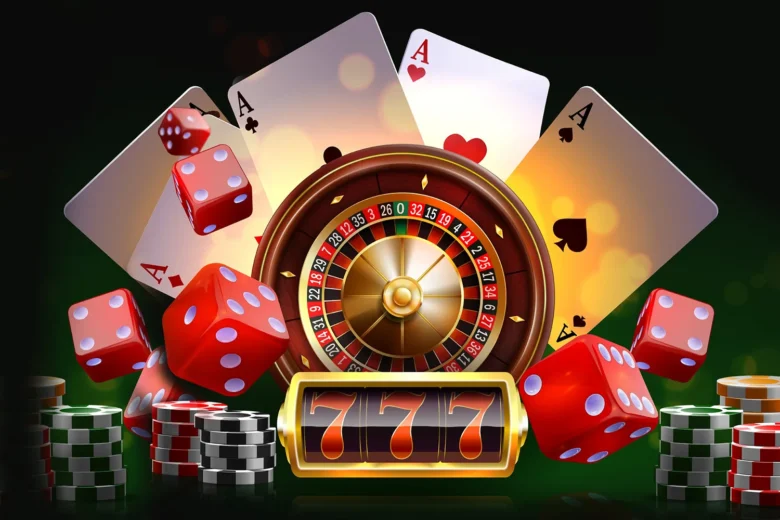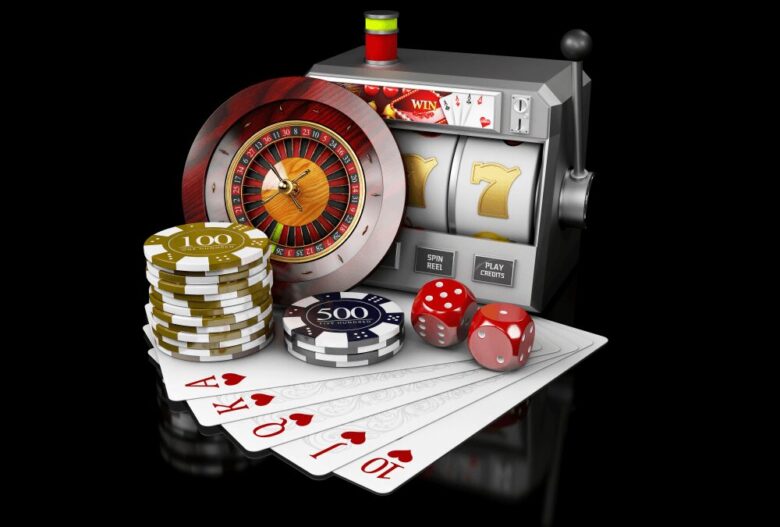In the ever-evolving landscape of digital entertainment, online casinos have emerged as a powerhouse, captivating millions with the allure of potential riches and the thrill of the game. But as technology advances and user expectations shift, how do these platforms keep players engaged and returning for more? Enter gamification—a strategy that infuses the excitement and mechanics of gaming into the casino experience. In this article, we’ll delve deep into the world of gamified online casinos, exploring its origins, its impact, and the multifaceted benefits it brings to both operators and players. Whether you’re a casual player, a casino enthusiast, or just curious about the fusion of gaming and gambling, strap in for a journey through the glittering nexus of entertainment and innovation.
From the saloons of the Wild West to the opulent halls of Monaco, casinos have long been a symbol of luxury, risk, and reward. The allure of the casino is not just in the potential for monetary gain but also in the atmosphere, the thrill of the game, and the challenge of outwitting opponents or simply beating the odds.
- Ancient Beginnings The roots of gambling can be traced back to ancient civilizations. Dice games in ancient China, betting on animal fights in ancient Rome, and various forms of gambling in ancient Egypt all point to a deep-seated human desire to take risks in hopes of a reward.
- European Flourish Fast forward to Europe in the 17th and 18th centuries, where gambling houses began to take a form more recognizable to today’s casino-goers. The Ridotto, established in Venice in 1638, is often cited as the first “official” casino, even though it bore little resemblance to the vast casino complexes of today.
- The American Dream Across the Atlantic, the United States saw the rise of its own gambling establishments, particularly during the Gold Rush era. The saloons of San Francisco and the makeshift gambling dens of the Mississippi Riverboats became iconic symbols of a nation’s rapid expansion and its frontier spirit.
From Neon Lights to Digital Bytes: The Shift from Brick-and-Mortar Casinos to Online Platforms

The late 20th century brought about a revolution that would change the face of gambling forever: the digital revolution. With the advent of the internet, the world of gambling was ripe for transformation.
- The Dawn of Online Casinos In the mid-1990s, the first online casinos made their debut, offering traditional games like blackjack and roulette to users across the globe. These platforms provided the convenience of playing from home, a feature that was particularly appealing to those who lived far from traditional casino hubs.
- Technological Advancements and Expansion As technology advanced, so did online casinos. Enhanced graphics, live dealer games, and mobile compatibility made online gambling more accessible and engaging. The introduction of secure payment methods and regulatory oversight added a layer of trust to these platforms.
- The Modern Landscape Today, online casinos are a multi-billion-dollar industry, with platforms offering a vast array of games, from slot machines to virtual sports betting. The convenience of online play, combined with the allure of big jackpots and the comfort of anonymity, has made them a popular choice for many.
While brick-and-mortar casinos still hold a special charm and continue to attract millions of visitors each year, there’s no denying that the digital age has reshaped the world of gambling, making it more accessible and diverse than ever before.
Understanding Gamification

Decoding the Game: Definition and Core Elements of Gamification
At its core, gamification is the art of applying game-like elements to non-game contexts. It’s not about turning tasks into games but rather infusing them with the motivational and engaging aspects found in games.
- Points:Just as players earn points in video games, gamification often involves awarding points for certain actions or achievements. These points can serve as a measure of progress or success.
- Badges and Achievements:Recognizing accomplishments is key. Badges or other symbols of achievement can be awarded for completing certain tasks or reaching milestones.
- Leaderboards:By showcasing top performers or players, leaderboards introduce a competitive element, encouraging individuals to outdo each other.
- Levels and Progression:As in many games where players progress through levels, gamified systems can have tiers or stages, offering increasing rewards or challenges.
- Challenges and Quests:Setting specific tasks or missions can guide user behaviour and provide clear goals.
- Feedback Mechanisms:Immediate feedback, whether through scores, alerts, or notifications, keeps participants informed and engaged.
Beyond the Game: Benefits of Gamification in Various Industries

Gamification isn’t just a buzzword in the online casino world; its influence spans across various sectors, proving its versatility and effectiveness.
- Education:By turning learning into a more interactive and competitive experience, students become more engaged and motivated. Platforms like Duolingo and Kahoot! are prime examples of gamification in education.
- Business and Employee Training:Companies use gamified platforms for training programs, making the learning process more engaging for employees. This can lead to better retention of information and improved performance.
- Marketing:Brands have started to use gamified strategies in their campaignsto boost customer engagement and loyalty. Examples include loyalty programs where customers earn points for purchases or interactive brand challenges on social media.
- Health and Fitness:Apps like Fitbit and MyFitnessPal use gamified elements, such as challenges and badges, to motivate users to achieve their health goals.
- Environmental and Social Causes:Gamification can also drive positive behavior in areas like recycling, energy conservation, or community involvement. By turning these actions into “challenges” with rewards, individuals are more likely to participate.
Benefits of Gamification in Online Casinos

- Hooked to the Screen: Enhanced User Engagement and Retention
Gamification, by its very nature, is designed to captivate. In the realm of online casinos, this translates to players spending more time on the platform, exploring different games, and immersing themselves in the overall experience.
- Milestones and Achievements: When players are rewarded for hitting certain milestones or unlocking achievements, they’re more likely to return to achieve the next level or badge.
- Interactive Challenges: Gamified challenges, whether daily, weekly, or monthly, give players a reason to log in regularly and engage with the platform.
- Hitting the Jackpot: Increased Revenue and Player Lifetime Value
A more engaged player is often a more loyal—and valuable—one. Gamification can directly impact a casino’s bottom line.
- Loyalty Programs: Points-based systems can encourage players to place more bets or try new games, increasing their overall spend.
- Tiered Rewards: By offering escalating rewards based on player loyalty or spending, casinos can incentivize longer-term commitment.
- A Winning Experience: Improved User Experience and Entertainment Value
Online casinos are not just about gambling; they’re about entertainment. Gamification amplifies this entertainment factor.

- Narrative Elements: Some casinos introduce storylines or narratives, turning the gambling experience into a larger adventure or quest.
- Diverse Challenges: Gamified elements can introduce variety, breaking the monotony and offering players new ways to engage beyond just placing bets.
- Playing it Safe: Encouraging Responsible Gambling through Gamified Limits and Reminders
Gamification isn’t just about increasing engagement; it can also be a tool for promoting safer gambling habits.
- Set Your Limits: Casinos can introduce gamified elements where players earn rewards for setting and sticking to their own deposit or loss limits.
- Time-Out Reminders: Players can receive badges or other incentives for taking regular breaks or setting session limits, ensuring they don’t overextend themselves.
- Educational Challenges: Gamified quizzes or challenges that educate players about responsible gambling can be both engaging and informative.
In the dynamic world of online casinos, gamification serves as a bridge between entertainment and business objectives. By enhancing the user experience, driving revenue, and promoting responsible behaviour, it’s a win-win for both casinos and their patrons.

